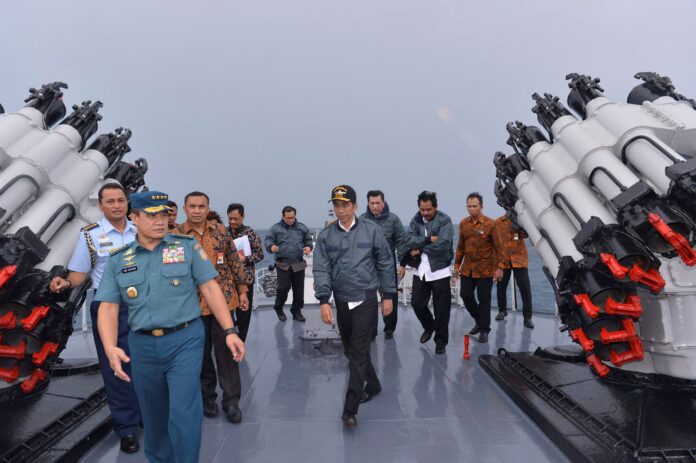A large number of Asian countries are out on a shopping spree for acquisition of weapons and equipment than the countries from any other continents across the globe. The USA and leading Western countries, on the other hand, face an unprecedented challenge to their global predominance from the growing Chinese-Russian alliance.
An arms race is gaining momentum all around the world and Asia appears to be in lead in many respects. The drivers for this shopping spree vary from global impact of the Ukrainian War to the strained relationships between countries. These two factors are forcing countries to go beyond their means to buy arms and ammunitions so that they can confront any untoward situation that may arise at any time. The database on global military expenditures maintained by the Stockholm International Peace Research Institute (SIPRI) reveals that two Asian countries, China and India, were the top second and third countries in arms purchases during 2021. Of the 10 top countries in military expenditures, 5 are from Asia, one from America, and the remaining 4 are from Europe. What it reflects is that a larger number of Asian countries are out on the shopping spree for military weapons and equipment than the countries from any other continents of the world (Table 01).
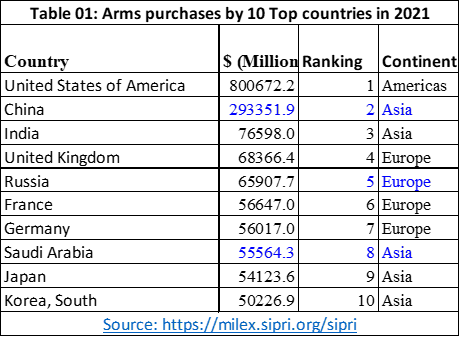
For some reasons, the Asian countries also appear to be on top of all other countries when we compare the value of military expenditures with the GDP of their countries. Except Saudi Arabia all other countries from top ten in military expenditures disappear from this list.
Six out of 10 top countries spending highest percentage of their GDPs on arms purchases are from the Middle East Asia and two each from Africa and East Europe. Pakistan holds 13th position after Russia and Greece (Table 02).

Among the South Asian countries, Pakistan is on top in terms of its military expenditures as the percentage of its GDP. India and Pakistan are the two countries whose purchases are in double digits ($76b and $11b) while the arms purchases by Bangladesh and Sri Lanka are in single digit ($4.8b and $1.5b). The remaining two countries, Nepal and Afghanistan, maintain their military expenditures with millions of dollars (Table 03).
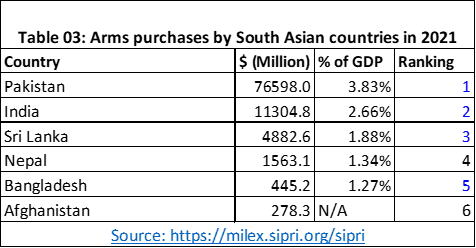
Interestingly, the 10 top economic powers of the world, except USA, spend a very small percentage of their GDP on purchases of arms and ammunition. Despite spending such a short percentage of their GDPs, they have most modern and costly arms and weaponries because of their strong economic base (Table 04).
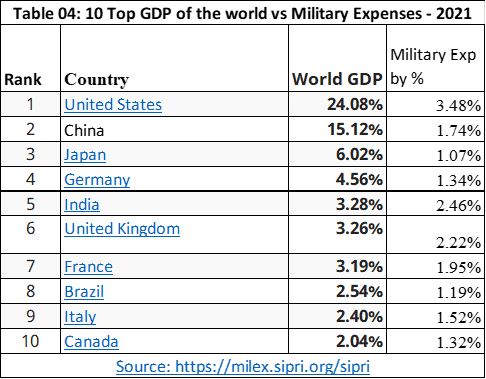
The military expenditures of top ten countries as reflected in Table 01 have multiple causes. China and Russia are allying with each other to create a new “international order” with an aim to challenge the hegemony of the USA and the Western countries. The latest meeting of Shanghai Cooperation Organisation (SCO) was viewed as an attempt of China and Russia to pursue other Asian countries to rally behind their goal for a new world order.
The USA and the Western countries, on the other hand, face an unprecedented challenge to their global role from Chinese and Russian alliance. To counter this challenge, they are taking every step that can help them retain the status-quo. Expanding NATO influence in European countries was one of the major reasons that had triggered Russia to invade Ukraine while the latest visit of the US House Speaker Nancy Pelosi to Taiwan in defiance of China’s serious objection was basically an attempt of the USA to prove its capability to counter any threat endangering its interests.
The three European countries, UK, Germany and France, are already in alliance with the USA on Ukraine War despite facing serious energy crisis and being the leading members of the NATO, they can’t step back from their position for allowing Eastern European countries to join the treaty. Japan and South Korea, the two major economic powers of Asia, are having very tense relationship with China on different issues that are influencing them to keep their defenses strong enough to counter any advances by China.
Of the top ten countries listed in Table 2, only three countries – Israel, Azerbaijan, and Armenia – are facing conflicting situation. The remaining seven countries doesn’t seem to have any major conflict with any other country. Yet, they are spending higher percentage of their GDPs on military expenditures.
The case of South Asian countries is also very interesting. Among the seven South Asian countries (Table 03), Pakistan is on top of all in spending the highest percentage of GDP on military expenditures. Pakistan faces internal threats from the Afghan-based militants and external threats from India. India, on the other hand, faces border conflicts with Pakistan and China. Among the remaining four countries of South Asia, only Afghanistan has a conflict with Pakistan on erecting the fencing along the Pak-Afghan border. Bangladesh, Nepal, and Sri Lanka have no border conflicts but Sri Lanka has gone into bankruptcy recently.
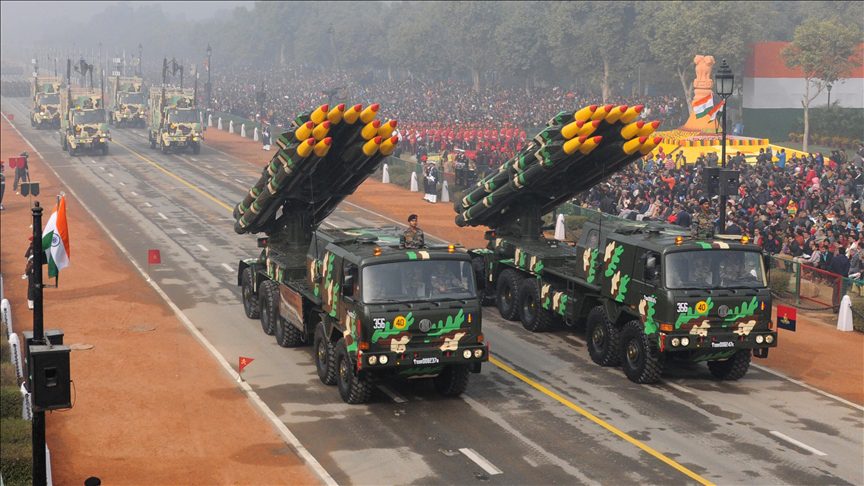
India is not facing any major financial crisis while Pakistan has run into major financial crisis and climatic disasters this year. Would Pakistan be able to continue following its historical trend of military expenditures or it would adapt to new realities? It’s a mind-boggling question and there is only one answer. If most of the South Asian countries can keep their military expenses within 2% of their GDPs, Pakistan can also follow the majority rather than pursuing its arch rival – India. To achieve this, Pakistan and India have to maintain cordial friendly ties and resolve the Kashmir issue separately from their bilateral relationship.



